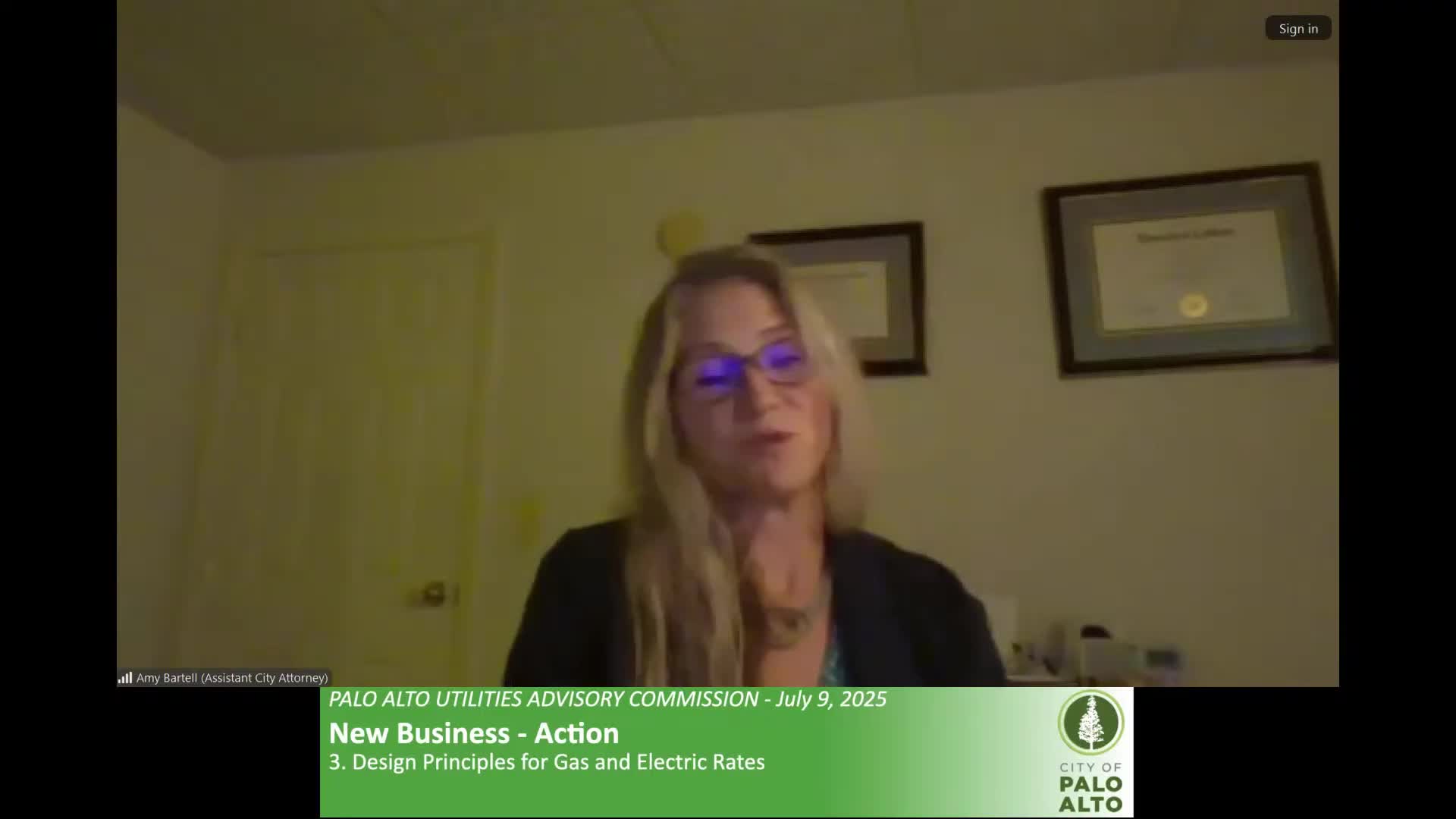Palo Alto Council explores utility rate structures for diverse customer needs
July 10, 2025 | Palo Alto, Santa Clara County, California
Thanks to Scribe from Workplace AI and Family Portal , all articles about California are free for you to enjoy throughout 2025!

This article was created by AI using a video recording of the meeting. It summarizes the key points discussed, but for full details and context, please refer to the video of the full meeting. Link to Full Meeting
One of the key topics was the exploration of flat rates versus time-of-use pricing. Commission members pondered how these models could align with the city's goals of promoting conservation and efficiency, especially within the framework of Proposition 26, which governs utility rate changes. The conversation highlighted a common hesitation among public agencies to venture too far into untested waters, often due to legal concerns. However, the commission expressed a desire to break from this trend, emphasizing that Palo Alto could lead the way in innovative rate design.
The discussion also touched on the importance of understanding fixed and variable costs in utility pricing. Members suggested that a subcommittee could investigate more granular customer classifications, particularly for multifamily residential units. This approach could help tailor rates to better reflect the actual consumption patterns of different customer groups, ensuring fairness and equity in billing.
Another intriguing proposal emerged regarding the treatment of ultra-low gas consumers. Some commission members advocated for a differentiated rate class that could provide subsidies for those who use minimal gas, such as households with only an outdoor grill or a backup gas fireplace. This idea aimed to support customers who primarily rely on carbon-free electricity while still maintaining a connection to natural gas for occasional use.
As the meeting progressed, the commission recognized the complexity of energy consumption patterns, particularly among low-income households. It was noted that higher energy use does not always correlate with wealth; larger families often face higher utility bills despite their limited financial means. This insight underscored the need for a thoughtful approach to rate design that considers the unique circumstances of all residents.
In conclusion, the Utilities Advisory Commission's meeting on July 9, 2025, served as a platform for exploring innovative utility rate structures that could enhance service equity and sustainability in Palo Alto. As discussions continue, the city stands poised to navigate the challenges of regulatory frameworks while striving to meet the evolving needs of its diverse community. The outcomes of these deliberations could set a precedent for other municipalities grappling with similar issues, marking Palo Alto as a leader in utility innovation.
Converted from Utilities Advisory Commission Meeting - July 9, 2025 meeting on July 10, 2025
Link to Full Meeting
Comments
View full meeting
This article is based on a recent meeting—watch the full video and explore the complete transcript for deeper insights into the discussion.
View full meeting
